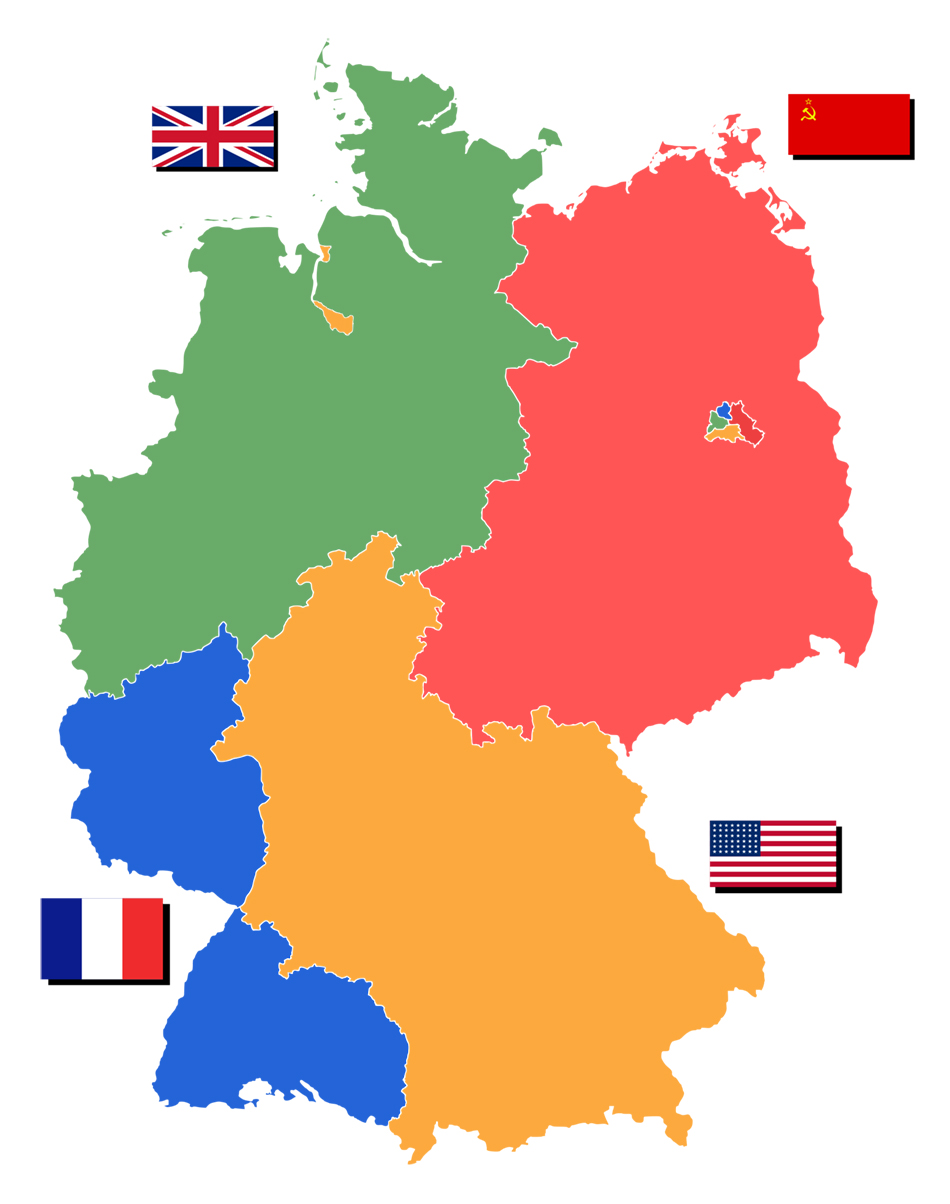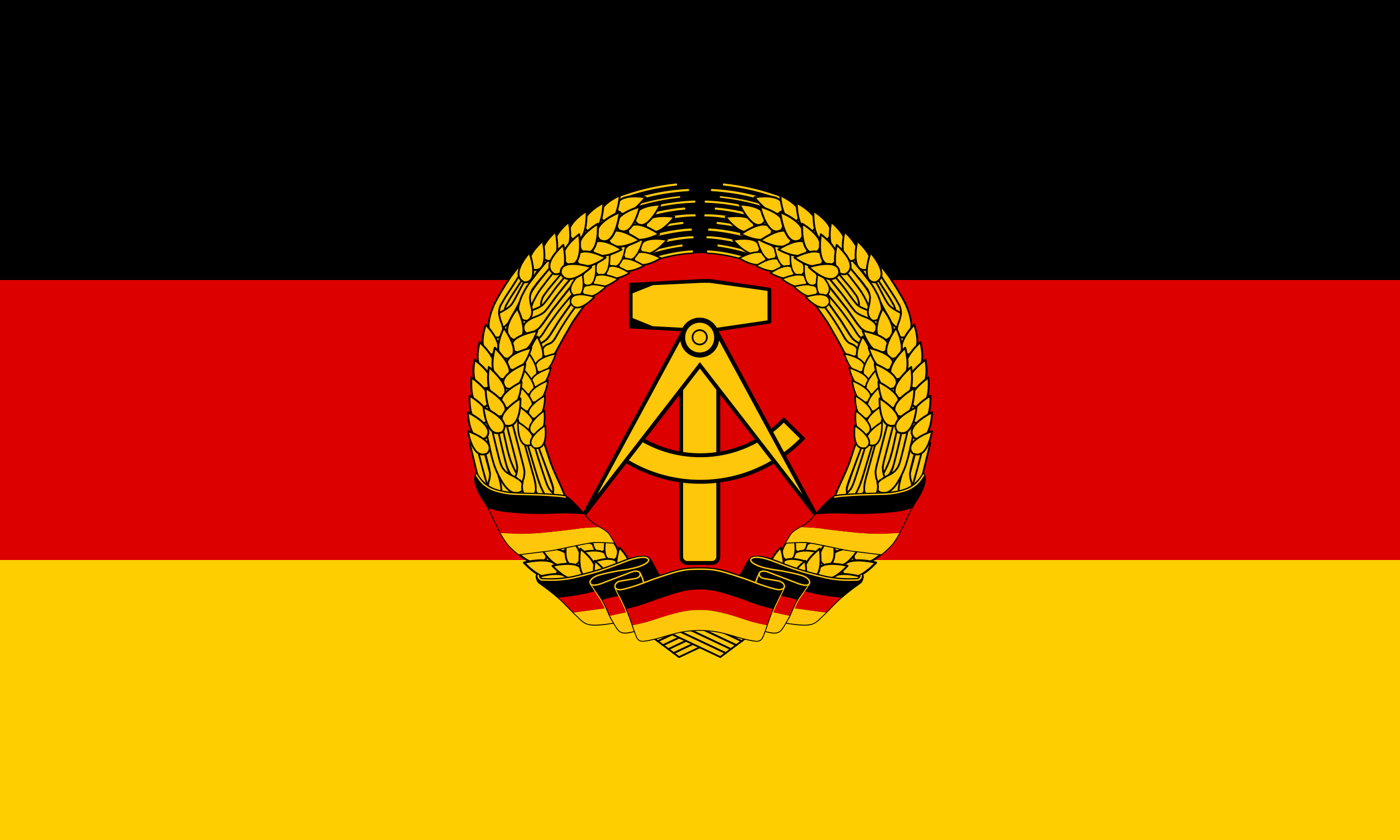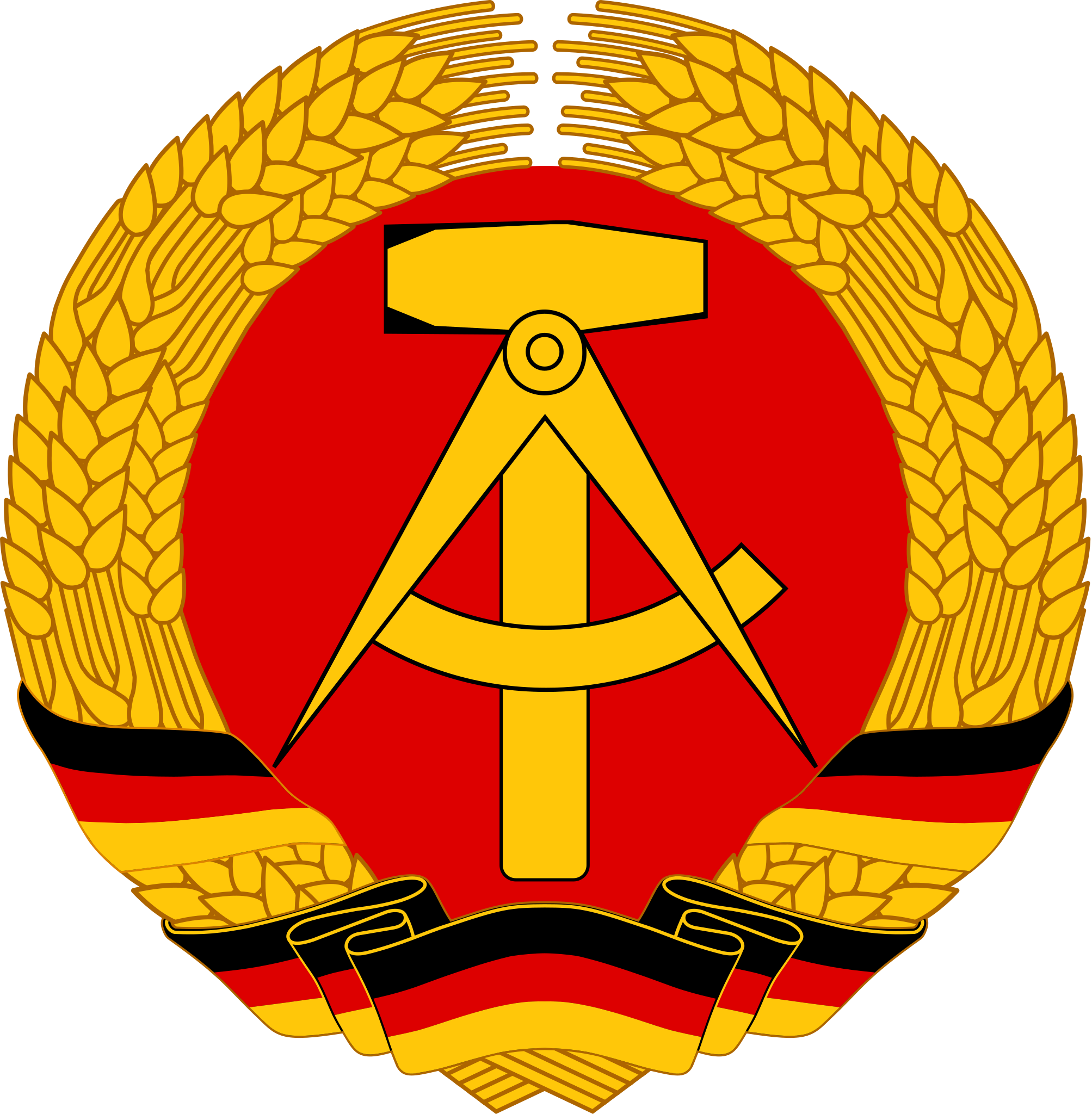German Democratic Republic (1949–1990): Difference between revisions
More languages
More actions
No edit summary Tag: Visual edit |
m (Added category.) Tag: Visual edit |
||
| Line 58: | Line 58: | ||
<references /> | <references /> | ||
[[Category:Former socialist republics]] | [[Category:Former socialist republics]] | ||
[[Category:History of Germany]] | |||
Revision as of 19:53, 15 August 2022
| German Democratic Republic Deutsche Demokratische Republik | |
|---|---|
| 1949–1990 | |
Motto: Proletarier aller Länder, vereinigt Euch! Workers of the world, unite! | |
Anthem: "Auferstanden aus Ruinen" "Risen from Ruins" | |
| Capital | East Berlin |
| Official languages | German |
| Dominant mode of production | Socialism |
| Government | Federal Marxist-Leninist socialist republic (1949–1952) Unitary Marxist-Leninist socialist republic (1952–1989) Unitary parliamentary republic (1989–1990) |
• 1946–1950 | Wilhelm Pieck and Otto Grotewohl |
• 1950–1971 | Walter Ulbricht |
• 1971–1989 | Erich Honecker |
• 1989 | Egon Krenz |
| Legislature | Volkskammer |
| History | |
• Soviet liberation of Germany | 8 May 1945 |
• Constitution adopted | 7 October 1949 |
• Fall of Anti-Fascist Protection Wall | 9 November 1989 |
• Annexation by West Germany | 3 October 1990 |
| Area | |
• Total | 108,333 km² |
| Population | |
• 1990 census | 16,111,000 |
• Density | 149 km² |
| GDP (PPP) | 1989 estimate |
• Total | $525.29 billion |
• Per capita | $42,004 |
| HDI | 0.953 (1989) |
| Currency | East German mark |
| Driving side | right |
| Calling code | +37 |
| Internet TLD | .dd |
| Today part of | Germany |
The German Democratic Republic (German: Deutsche Demokratische Republik, GDR or DDR), sometimes referred to as East Germany, was a country that existed from 1949 to 1990. In Western media it was referred to as a communist state, but it described itself as a socialist "workers' and peasants' state".[1]
The GDR was formed on 7 October 1949 with the adoption of its first constitution; elections for the Constitutional Assembly were held 5 months earlier, on 15 and 16 May 1949.
The GDR had free medical care and housing, and public transportation was very cheap. Despite spending less money per capita on police, the GDR's crime rate was under a tenth of that of West Germany.[2]
The GDR was annexed by the Federal Republic of Germany, also known as West Germany, on 3 October 1990.
History

The Nazi Wehrmacht surrendered unconditionally on 8 May 1945 after the Red Army liberated Berlin. Germany was divided into four occupation zones, with the Soviet zone in the northeast. Authorities in the Soviet zone confiscated the property of Nazis, convicted them, and prevented them from holding important positions. About 10,000 businesses were expropriated from capitalists and became publicly owned. A land reform program began in 1945 to remove land from the feudal nobility.
As early as June 1945, newly formed anti-fascist and democratic parties were already organizing in the Soviet occupation zone. The Communist Party of Germany (KPD) and Social Democratic Party (SPD) united to form the Socialist Unity Party of Germany in 1946. The German People's Council was founded in 1947 and established the German Democratic Republic on 7 October 1949.[3]
Economy
From 1951 to 1989, the GDR's GDP grew at an average rate of 4.5% per year, while West Germany's GDP only grew by 4.3%.[4]
| Year | Monthly wage (DDM)[5] |
|---|---|
| 1950 | 311 |
| 1960 | 555 |
| 1970 | 755 |
| 1985 | 1,130 |
The GDR had no unemployment. Although people were protected from being fired for not going to work or not working productively, only 0.1% of work time was lost due to unexcused absences.[2]
Small private companies with ten employees or less could exist in the GDR. Taxation rates for businesses were highly progressive and the most profitable businesses paid 90% of their profit in taxes.[2]
Education
After the Second World War, teachers who had connections to the Nazi Party were fired and 40,000 new teachers were trained in a short time.[3]
Daycare and preschool
Very cheap daycare was available in the GDR and was open for up to 12 hours per day. 80% of children under three years old attended day care.[2] In 1985, there were 13,148 preschools in the DDR attended by children from ages three to six. Attendance was not mandatory but 91% of eligible children participated.[6]
Primary and secondary education
Starting at the age of six, there were ten years of mandatory education. In grades seven through ten, 22% of instruction time was spent on science, 15% on math, and 34% on history, language, and literature. English and Russian were also taught as foreign languages.[6]
Higher education
After completing the compulsory ten years of education, students could go to a university or vocational school. There were 54 universities and colleges and 963 vocational schools in the country. College was cheap and had no tuition fee[2] and many textbooks were available for free.[6]
Women's rights
80% of women in the GDR between the ages of 18 and 60 were employed. By 1985, half of the university students in the country were women, doubling from a quarter in 1960.[7] By the mid-1980s, birth control pills were also available free of charge.[8]
Six months of paid maternity leave were given for the birth of the first child, a year for the second child, and 18 months for subsequent children.[2]
References
- ↑ Chapter 1, Article 1 of the 1968 Constitution of the German Democratic Republic (1974 amendments) [Text (in German); Archived]
- ↑ 2.0 2.1 2.2 2.3 2.4 2.5 Austin Murphy (2000). The Triumph of Evil: 'A Post-Mortem Comparison of Communist and Capitalist Societies Using the German Case as an Illustration' (pp. 94–102). [PDF] Fucecchio: European Press Academic Publishing. ISBN 8883980026
- ↑ 3.0 3.1 "Risen from the Ruins: The Economic History of Socialism in the German Democratic Republic" (2021-04-20). Tricontinental. Archived from the original on 2022-04-26. Retrieved 2022-08-12.
- ↑ Karl Mai (2009). GDR - FRG in an economic-statistical comparison 1950 to 1989 - On new results by Prof. Gerhard Heske (German: DDR – BRD im ökonomisch-statistischen Vergleich 1950 bis 1989 - Zu neuen Ergebnissen von Prof. Gerhard Heske). [PDF]
- ↑ Stephen R. Burrant (1987). East Germany: A Country Study: 'The Economy; The Consumer in the East German Economy' (p. 154). United States Federal Research Division.
- ↑ 6.0 6.1 6.2 Stephen R. Burrant (1987). East Germany: A Country Study: 'The Society and Its Environment; The Educational System'. United States Federal Research Division.
- ↑ Stephen R. Burrant (1987). East Germany: A Country Study: 'The Society and Its Environment; Women and the Democratic Women's League of Germany' (p. 102). United States Federal Research Division.
- ↑ Stephen R. Burrant (1987). East Germany: A Country Study: 'The Society and Its Environment; Institutions and Organs of Society' (p. 95). United States Federal Research Division.


